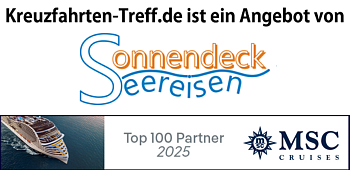die drei führenden Branchenverbände Cruise Lines International Assoication (CLIA), European Cruise Council (ECC) und Passenger Shipping Association (PSA) haben heute bekanntgegeben, daß sie gemeinsam eine neue Praxis für Rettungsübungen beschlossen haben
Jeder Passagier muss zukünftig nach seiner Einschiffung noch vor dem Ablegen an einer Rettungsübung teilgenommen haben.
Folgende gemeinsame Pressemitteilung der Verbände habe ich erhalten:
CRUISE INDUSTRY ASSOCIATIONS ADOPT NEW MUSTER DRILL POLICY
Best Practice Identified Through Cruise Industry Operational Safety Review
LONDON - (February 9, 2012) – The global cruise industry today announced a new emergency drill policy requiring mandatory muster for embarking passengers prior to departure from port. The new policy follows the industry’s announcement on January 27 of a Cruise Industry Operational Safety Review in response to the Concordia incident and as part of the industry’s continuous efforts to review and improve safety measures. The Cruise Lines International Association, European Cruise Council, and the Passenger Shipping Association put forward the new policy with the support of their member cruise lines.
The new muster policy, which has been voluntarily initiated by the associations’ members and is effective immediately, exceeds existing legal requirements by calling for the mandatory muster of all embarking passengers prior to departure from port. On rare occasions when passengers arrive after the muster has been completed, passengers will be promptly provided with individual or group safety briefings that meet the requirements for musters applicable under the International Convention for the Safety of Life at Sea (SOLAS). The formal policy is designed to help ensure that any mandatory musters or briefings are conducted for the benefit of all newly embarked passengers at the earliest practical opportunity.
Musters are mandatory exercises conducted on cruise ships to ensure passengers are informed of safety protocols while onboard the ship, including emergency evacuation procedures. Current legal requirements for conducting a muster of passengers can be found in SOLAS and mandate that a muster occur within 24 hours of passenger embarkation.
The Cruise Industry Operational Safety Review includes a comprehensive assessment of the critical human factors and operational aspects of maritime safety. As best practices are identified, they will be shared among cruise industry association members and any appropriate recommendations will be shared with the International Maritime Organization (IMO), European Union and other governmental authorities as appropriate. The industry’s efforts also are consistent with the framework and spirit of the International Safety Management Code. Recommendations resulting from the Review will be made on an ongoing basis.
A copy of the new muster policy can be viewed at: http://www.cruising.org/regulatory/crui ... y-policies.
About CLIA
The nonprofit Cruise Lines International Association (CLIA) is the world’s largest cruise industry organization. CLIA represents the interests of 26 member lines and participates in the regulatory and policy development process while supporting measures that foster a safe, secure and healthy cruise ship environment. CLIA is also engaged in travel agent training, research, and marketing communications to promote the value and desirability of cruise vacations with thousands of travel agency and travel agent members across North America. For more information about CLIA, the cruise industry, and CLIA member lines and travel agencies, visit http://www.cruising.org. CLIA can also be followed on the Cruise Lines International Association's Facebook and Twitter fan pages.
About the Passenger Shipping Association
The PSA is the trade association for the cruise and ferry industry in the UK. The company was originally set up in 1958 as an association of passenger ship owners, under the name Ocean Travel Development (OTD). In 1976 OTD changed its name to Passenger Shipping Association as it was thought this better reflected the purposes of the association. The PSA is now widely recognized as the body that truly represents all passenger shipping interests within the UK.
About the European Cruise Council
The European Cruise Council (ECC) represents the leading cruise companies operating in Europe and has 30 cruise members and 34 associate members. The ECC promotes the interests of cruise ship operators within Europe, liaising closely with the EU Institutions: the Commission, the Parliament, the Council of Ministers and their Permanent Representatives as well as with the European Maritime Safety Agency (EMSA). The ECC also looks to protect the interests of its Members through close liaison with other European bodies such as the European Community Shipowners Association (ECSA), the European Sea Ports Association (ESPO) and the European Travel Agents & Tour Operators Association (ECTAA).The ECC also promotes cruising to a wider public audience to encourage expansion of the European cruise market and works closely with a number of regional bodies such as Cruise Baltic, Cruise Europe, Cruise Norway and MedCruise. The European cruise industry continues to increase its share of the global cruise market with 25.2 million passengers visiting a European port in 2010; 5.2 million passengers joined their cruise in Europe in the same year with the industry generating €35.2 billion of goods and services and providing almost 300,000 jobs. In 2010 there were 198 cruise ships operating in Europe ranging in size from 3,600 passengers to less than 100.






